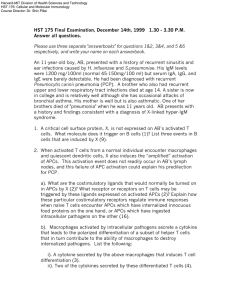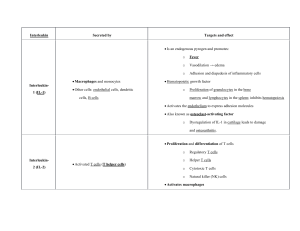Homework 2.2 1. Random vs. chemotactic motion of macrophages.
advertisement
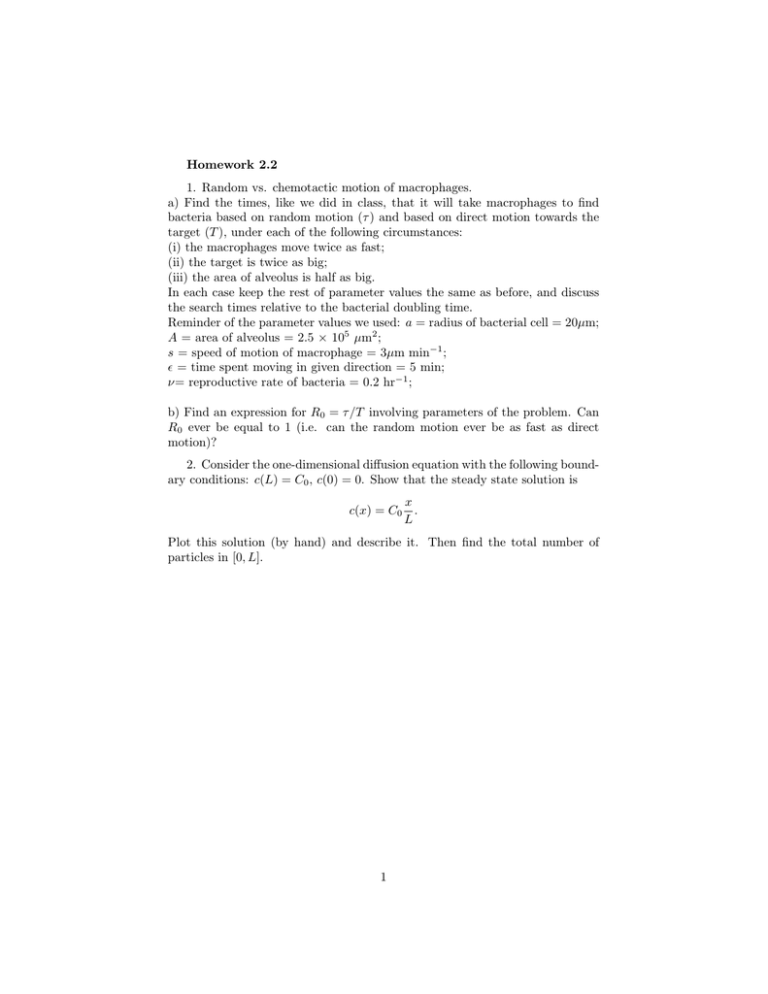
Homework 2.2 1. Random vs. chemotactic motion of macrophages. a) Find the times, like we did in class, that it will take macrophages to find bacteria based on random motion (τ ) and based on direct motion towards the target (T ), under each of the following circumstances: (i) the macrophages move twice as fast; (ii) the target is twice as big; (iii) the area of alveolus is half as big. In each case keep the rest of parameter values the same as before, and discuss the search times relative to the bacterial doubling time. Reminder of the parameter values we used: a = radius of bacterial cell = 20µm; A = area of alveolus = 2.5 × 105 µm2 ; s = speed of motion of macrophage = 3µm min−1 ; = time spent moving in given direction = 5 min; ν= reproductive rate of bacteria = 0.2 hr−1 ; b) Find an expression for R0 = τ /T involving parameters of the problem. Can R0 ever be equal to 1 (i.e. can the random motion ever be as fast as direct motion)? 2. Consider the one-dimensional diffusion equation with the following boundary conditions: c(L) = C0 , c(0) = 0. Show that the steady state solution is x c(x) = C0 . L Plot this solution (by hand) and describe it. Then find the total number of particles in [0, L]. 1
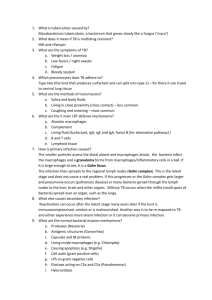

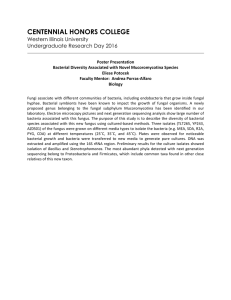





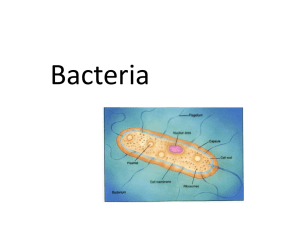
![Anti-pan Macrophage antibody [Ki-M2R] ab15637 Product datasheet 1 References 1 Image](http://s2.studylib.net/store/data/012548928_1-267c6c0c608075eece16e9b9ab469ad0-300x300.png)
